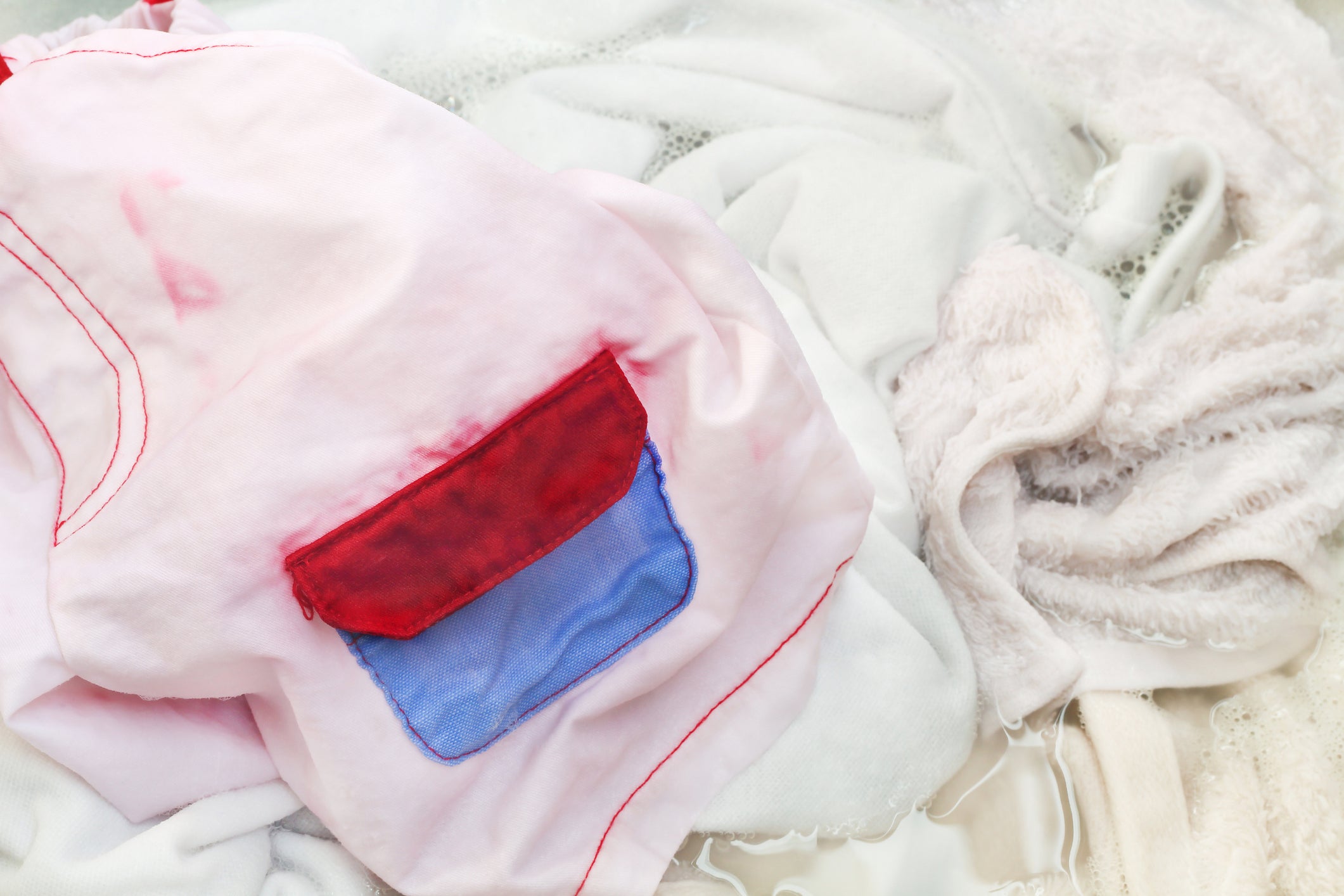Imagine this: you’ve just finished washing a bright pink shirt with your favorite white t-shirt. You excitedly pull everything out of the washing machine, only to find that your white t-shirt has been stained a light pink hue. That dreadful feeling of disappointment and a desire to rewind time washes over you. You’ve just experienced the dreaded color bleed, a phenomenon that can ruin your favorite garments and leave you with unwanted shades.

Image: cleanhomelab.com
Fear not! This article is your comprehensive guide on how to remove color bleed stains from clothing. We’ll delve into the causes, different methods for removing these stains, and tips to prevent future color bleed disasters. Let’s get started!
Understanding Color Bleed
What is Color Bleed?
Color bleed occurs when dyes from one garment release into the wash water and then transfer onto other clothes. It often happens with new, brightly colored garments that haven’t been pre-washed. These dyes, especially those used in synthetic fabrics, can be loose and easily release, especially when exposed to hot water.
Think of it like a watercolor painting. When you add water to the paint, it disperses and can easily stain nearby areas. The same principle applies to color bleed. The water in the washing machine works like a brush, carrying the loose dye from one garment to another.
Factors Contributing to Color Bleed
Several factors can increase the likelihood of color bleeding. These include:
- Fabric Type: Synthetic fabrics like polyester and rayon are more prone to color bleed than natural fabrics like cotton and linen.
- Dye Quality: Lower-quality dyes tend to be less colorfast, making them more susceptible to bleeding.
- Water Temperature: Washing clothes in hot water can loosen dyes and lead to bleeding.
- Overloading: Overloading the washing machine can prevent proper agitation and increase the chance of color transfer.

Image: www.clorox.com
How to Remove Color Bleed Stains
Pre-Treatment
Before washing the stained garment, try to remove as much of the excess dye as possible. Here’s how:
- Cold Water Rinse: Rinse the stained garment under cold running water. Do not use hot water, as it can set the stain.
- Vinegar Soak: Soak the stained garment in a solution of cold water and white vinegar (1 cup per gallon of water) for at least 30 minutes. The vinegar helps loosen the dye and neutralize the stain.
Washing and Drying
After pre-treatment, wash the garment as you normally would, but with a few adjustments:
- Cold Wash: Always wash the stained garment in cold water. Avoid hot or warm water, as it can set the stain.
- Gentle Detergent: Use a mild, color-safe detergent. Avoid harsh detergents, as they can damage fabrics and worsen the stain.
- Separate Wash: Wash the stained garment separately from other clothes, especially white and light-colored garments.
- Do Not Tumble Dry: Heat can set the stain, so air-dry the garment outdoors or indoors.
Stain Removal Products
If pre-treatment and washing don’t fully remove the color bleed stain, consider using a dedicated color bleed remover or stain remover.
Here are a few options:
- Commercial Color Bleed Remover: Products specifically designed for color bleed removal are available at most grocery stores and online retailers. These often contain enzymes that break down dye molecules and remove stains.
- Oxygen Bleach: Oxygen bleach is a gentler alternative to chlorine bleach that can lighten stains without damaging fabrics.
- Dish Soap: Dish soap can work surprisingly well on color bleed stains. Simply apply a small amount of dish soap to the stain, rub gently, and then wash as usual.
Tips for Preventing Color Bleed
Preventing color bleed is all about taking a few extra precautions.
Here’s a checklist to follow:
- Pre-wash New Garments: Wash new garments, especially brightly colored ones, separately before washing them with other clothes.
- Check Care Labels: Always read the care labels on your clothes to understand the recommended washing temperature and detergent type.
- Color Groups: Wash similar colors together. For example, wash all dark colors together, light colors together, and white clothes separately.
- Skip Fabric Softener: Fabric softeners can contribute to color bleed, so avoid them when washing new clothes.
FAQs About Color Bleed
What if I accidentally washed a white shirt with a colored garment and the stain is still there?
Try using a stain remover and follow the instructions on the product label. If the stain persists, consider taking the garment to a professional dry cleaner.
I have a lot of new clothes that I want to wash. Will pre-washing every single item prevent color bleed?
Yes, pre-washing all new garments is the best way to avoid color bleed. However, if you are short on time, you can pre-wash the most brightly colored garments or those made from synthetic fabrics.
How To Get Color Bleed Out Of Clothes
Conclusion
Color bleed is a common problem that can be frustrating, but it’s not impossible to deal with. By following the tips outlined in this article, you can remove unwanted color stains and prevent future dye disasters. Remember, pre-washing new garments, separating colors, and using cold water are key to keeping your clothes looking their best.
Are you confident now with tips on how to get color bleed out of clothes? Share your experiences and ask any further questions in the comments below!





